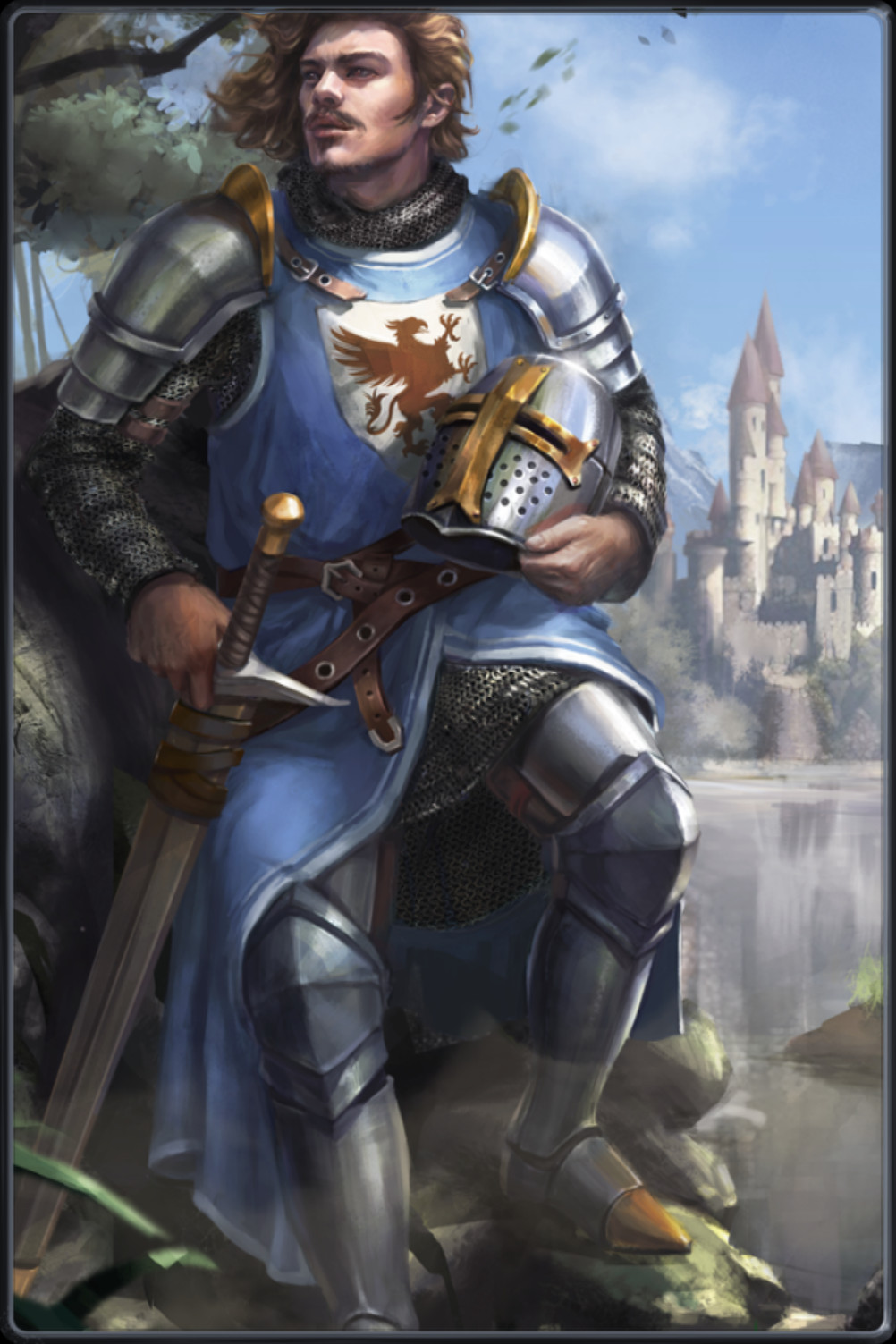

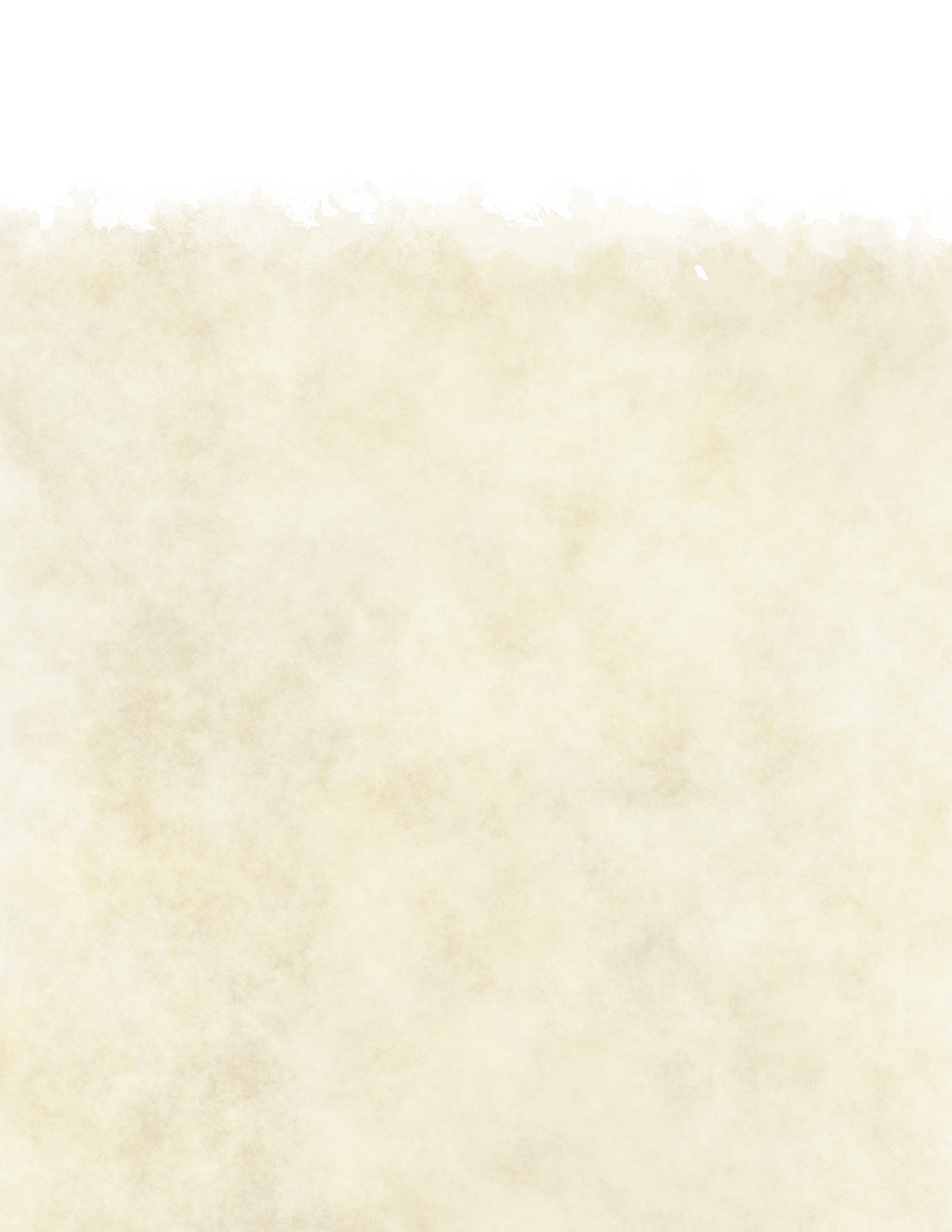
Fighter
A human in clanging plate armor holds her shield before her as she runs toward the massed goblins. An elf behind her, clad in studded leather armor, peppers the goblins with arrows loosed from his exquisite bow. The half-orc nearby shouts orders, helping the two combatants coordinate their assault to the best advantage.
A dwarf in chain mail interposes his shield between the ogre’s club and his companion, knocking the deadly blow aside. His companion, a half-elf in scale armor, swings two scimitars in a blinding whirl as she circles the ogre, looking for a blind spot in its defenses.
A gladiator fights for sport in an arena, a master with his trident and net, skilled at toppling foes and moving them around for the crowd’s delight—and his own tactical advantage. His opponent’s sword flares with blue light an instant before she sends lightning flashing forth to smite him.
All of these heroes are fighters, perhaps the most diverse class of characters in the worlds of Dungeons & Dragons. Questing knights, conquering overlords, royal champions, elite foot soldiers, hardened mercenaries, and bandit kings—as fighters, they all share an unparalleled mastery with weapons and armor, and a thorough knowledge of the skills of combat. And they are well acquainted with death, both meting it out and staring it defiantly in the face.
Well-Rounded Specialists
Fighters learn the basics of all combat styles. Every fighter can swing an axe, fence with a rapier, wield a longsword or a greatsword, use a bow, and even trap foes in a net with some degree of skill. Likewise, a fighter is adept with shields and every form of armor. Beyond that basic degree of familiarity, each fighter specializes in a certain style of combat.
Some concentrate on archery, some on fighting with two weapons at once, and some on augmenting their martial skills with magic. This combination of broad general ability and extensive specialization makes fighters superior combatants on battlefields and in dungeons alike.
Trained for Danger
Not every member of the city watch, the village militia, or the queen’s army is a fighter. Most of these troops are relatively untrained soldiers with only the most basic combat knowledge. Veteran soldiers, military officers, trained bodyguards, dedicated knights, and similar figures are fighters.
Some fighters feel drawn to use their training as adventurers. The dungeon delving, monster slaying, and other dangerous work common among adventurers is second nature for a fighter, not all that different from the life he or she left behind. There are greater risks, perhaps, but also much greater rewards—few fighters in the city watch have the opportunity to discover a magic flame tongue sword, for example.
Creating a Fighter
As you build your fighter, think about two related elements of your character’s background: Where did you get your combat training, and what set you apart from the mundane warriors around you? Were you particularly ruthless? Did you get extra help from a mentor, perhaps because of your exceptional dedication? What drove you to this training in the first place? A threat to your homeland, a thirst for revenge, or a need to prove yourself might all have been factors.
You might have enjoyed formal training in a noble’s army or in a local militia. Perhaps you trained in a war academy, learning strategy, tactics, and military history. Or you might be self-taught—unpolished but well tested. Did you take up the sword as a way to escape the limits of life on a farm, or are you following a proud family tradition? Where did you acquire your weapons and armor? They might have been military issue or family heirlooms, or perhaps you scrimped and saved for years to buy them. Your armaments are now among your most important possessions—the only things that stand between you and death’s embrace.
Quick Build
You can make a fighter quickly by following these suggestions. First, make Strength or Dexterity your highest ability score, depending on whether you want to focus on melee weapons or on archery (or finesse weapons). Your next-highest score should be Constitution, or Intelligence if you plan to adopt the Eldritch Knight martial archetype. Second, choose the soldier background.


The Fighter
| Level | Proficiency Bonus | Features | Maneuvers Known | Superiority Dice |
|---|---|---|---|---|
| 1st | +2 | Fighting Style, Second Wind | ─ | ─ |
| 2nd | +2 | Action Surge | ─ | ─ |
| 3rd | +2 | Martial Archetype, Maneuvers | 4 | 3 (d8) |
| 4th | +2 | Ability Score Improvement | 4 | 3 (d8) |
| 5th | +3 | Extra Attack | 4 | 3 (d8) |
| 6th | +3 | Ability Score Improvement | 4 | 3 (d8) |
| 7th | +3 | Martial Archetype Feature | 5 | 4 (d8) |
| 8th | +3 | Ability Score Improvement | 5 | 4 (d8) |
| 9th | +4 | Indomitable, Fighting Style | 5 | 4 (d8) |
| 10th | +4 | Martial Archetype Feature, Improved Combat Superiority | 6 | 4 (d10) |
| 11th | +4 | Extra Attack x2 | 6 | 4 (d10) |
| 12th | +4 | Ability Score Improvement | 6 | 4 (d10) |
| 13th | +5 | Indomitable x2 | 6 | 4 (d10) |
| 14th | +5 | Ability Score Improvement | 6 | 4 (d10) |
| 15th | +5 | Relentless, Action Surge x2 | 7 | 5 (d10) |
| 16th | +5 | Ability Score Improvement | 7 | 5 (d10) |
| 17th | +6 | Extra Attack x3, Indomitable x3 | 7 | 5 (d10) |
| 18th | +6 | Martial Archetype Feature, Fighting Style | 7 | 5 (d12) |
| 19th | +6 | Ability Score Improvement | 7 | 5 (d12) |
| 20th | +6 | Survivor | 7 | 5 (d12) |
Class Features
Hit Points
Hit Dice: 1d10 per fighter level.
Hit Points at 1st Level: 10 + your Constitution modifier.
Hit Points at Higher Levels: 1d10 (or 6) + your Constitution modifier per fighter level after 1st.
Proficiencies
Armour: All armor, shields
Weapons: All simple and martial weapons
Tools: None
Saving Throws: Strength, Constitution
Skills: Choose two skills from Acrobatics, Animal Handling, Athletics, History, Insight, Intimidation, Perception, and Survival.
Equipment
- (a) chain mail or (b) leather armor, longbow, and 20 arrows
- (a) a martial weapon and a shield or (b) two martial weapons
- (a) a light crossbow and 20 bolts or (b) two handaxes
- (a) a dungeoneer's pack or (b) an explorer's pack
Fighting Style
At first level, choose one of the following options. You choose additional options again at 9th level and at 18th level. You cannot choose the same option more than once.
- Archery: You gain a +2 bonus to attack rolls you make with ranged weapons.
- Defense: While you are wearing armor, you gain a +1 bonus to AC.
- Dueling: When you are wielding a melee weapon in one hand and no other weapons, you gain a +2 bonus to damage rolls with that weapon.
- Great Weapon Fighting: When you roll damage for an attack you make with a melee weapon that you are wielding with two hands, you can reroll the weapon damage and must use the new result. The weapon must have the two-handed or versatile property for you to gain this benefit.
- Protection: When a creature you can see attacks a target other than you that is within 5 feet of you, you can use your reaction to impose disadvantage on the attack roll. You must be wielding a shield.
- Two-Weapon Fighting: When you engage in two weapon fighting, you can make the second attack as part of your attack action instead of as a bonus action.
- Defensive Duelist: When you are wielding a one handed melee weapon with which you are proficient and another creature hits you with a melee attack, you can use your reaction to add your proficiency bonus to your AC for that attack, potentially causing it to miss you.
- Grappler: You have advantage on athletics checks to grapple creatures and you have advantage on attack rolls against a creature you are grappling.
Second Wind
At first level, on your turn, you can use a bonus action to regain hit points equal to 1d10 + your fighter level. Once you use this feature, you must finish a short or long rest before you can use it again.
Action Surge
Starting at second level, on your turn, you can take one additional action on top of your regular action and a possible bonus action. Once you use this feature, you must finish a short or long rest before you can use it again. Starting at 15th level, you can use it twice before a rest, but only once on the same turn.
Martial Archetype
At third level, you choose an archetype that you strive to emulate in your combat styles and techniques. It grants you a feature a 3rd level, and again at 7th, 10th, 15th, and 18th level. Choose from Arcane Archer, Banneret, Cavalier, Champion, Eldritch Knight or Samurai.
Maneuvers
At 3rd level, you learn four maneuvers of your choice from the list of Basic Maneuvers below and your martial archetype's maneuver list. Maneuvers are fueled by Superiority Dice. Many maneuvers enhance an attack in some way. You can only use one maneuver per attack.
You learn an additional maneuver of your choice at 7th, 10th, and 15th level. Each time you gain a level in this class, you can replace one maneuver you know with a different one.
Superiority Dice. You have three superiority dice, which are d8s. A superiority die is expended when you use it. You regain all of your expended superiority dice when you finish a short or long rest. You gain another superiority die at 7th level and one more at 15th level.
Saving Throws. Some of your maneuvers require your target to make a saving throw to resist the maneuver’s effects. The saving throw DC is 8 + your Strength or Dexterity modifier + your proficiency bonus.
Ability Score Improvement
When you reach 4th level, and again at 6th, 8th, 12th, 14th, 16th, and 19th level, you can increase one ability score of your choice by 2, or you can increase two Ability Scores of your choice by 1. As normal, you can't increase an ability score above 20 using this feature.
Extra Attack
Beginning at 5th level, you can attack twice, instead of once, whenever you take the Attack action on your turn. The number of attacks increases to three when you reach 11th level in this class and to four when you reach 17th level in this class.
Indomitable
Beginning at 9th level, you can reroll a saving throw that you fail. If you do so, you can't use this feature again until you finish a short or long rest.
You can use this feature twice between rests starting at 13th level and three times between rests starting at 17th level.
Improved Combat Superiority
When you reach 10th level, your superiority dice turn into d10s. When you reach level 18, your dice turn into d12s.
Relentless
Starting at level 15, whenever you roll for initiative and have less than 2 superiority dice, you have 2 superiority dice.
Survivor
At 20th level, at the start of each of your turns, you regain hit points equal to 5 + your constitution modifier if you have no more than half of your hit points left. You don't gain this benefit if you have 0 hit points.
Basic Maneuvers
-
Trip Attack: When you hit a creature with a weapon attack, you can expend one superiority die to attempt to knock the target down. You add the superiority die to the attack's damage roll, and if the target is Large or smaller, it must make a Strength saving throw or be knocked prone.
-
Precision Attack: When you make a weapon attack roll against a creature, you can expend one superiority die to add it to the roll. You can use this maneuver before or after making the attack roll, but before any effects of the attack are applied.
-
Menacing Attack: When you hit a creature with a weapon attack, you can expend one superiority die to attempt to frighten the target. You add the superiority die to the attack's damage roll, and the target must make a Wisdom saving throw. On a failed save, it is frightened of you until the end of your next turn.
-
Disarming Attack: When you hit a creature with a weapon attack, you can expend one superiority die to attempt to disarm the target, forcing it to drop one item of your choice that it's holding. You add the superiority die to the attack's damage roll, and the target must make a Strength saving throw. On a failed save, it drops the object you choose. The object lands at its feet.
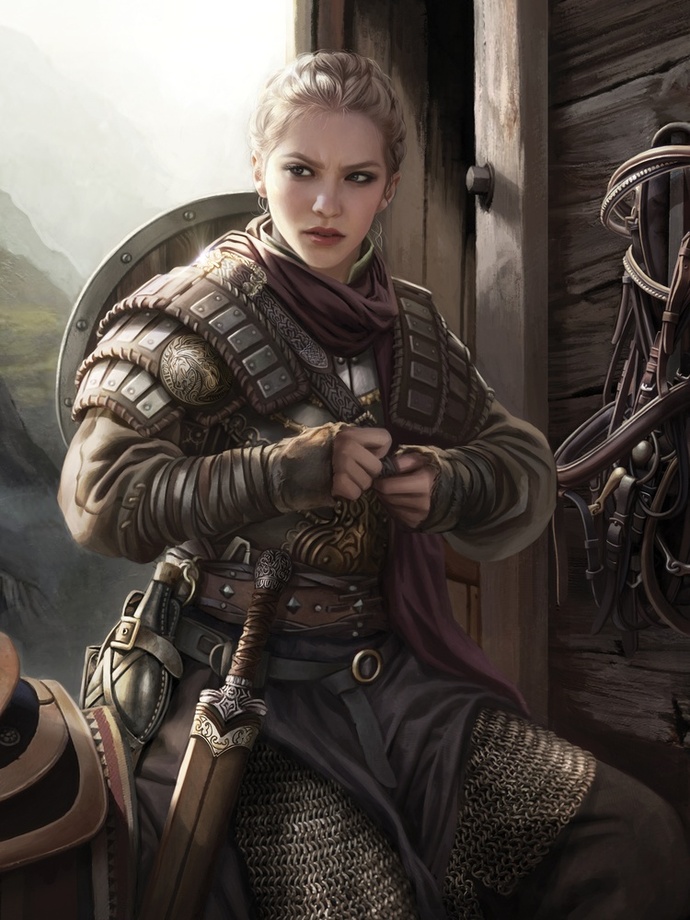


Arcane Archer
An Arcane Archer studies a unique elven method of archery that weaves magic into attacks to produce supernatural effects. Arcane Archers are some of their most elite warriors among the elves. They stand watch over the fringes of elven domains, keeping a keen eye out for trespassers and using magic-infused arrows to defeat monsters and invaders before they can reach elven settlements.
Over the centuries, the methods of these elf archers have been learned by members of other races who can also balance arcane aptitude with archery.
Arcane Archer Lore
At 3rd level, you choose to gain proficiency in either the Arcana or the Nature skill. If you choose Arcana you learn the Prestidigitation cantrip and one other cantrip from the Wizard spell list. If you choose Nature you learn the Druidcraft cantrip and one other cantrip from the Druid spell list.
Magic Arrow
At 7th level, whenever you fire a nonmagical arrow from a shortbow or longbow, you can make it magical for the purpose of overcoming resistance and immunity to nonmagical attacks and damage. The magic fades from the arrow immediately after it hits or misses its target.
Curving Shot
At 10th level, when you make an attack roll with a magic arrow and miss, you can use a bonus action to reroll the attack roll against a different target within 60 feet of the original target.
Ever-Ready Shot
Starting at 18th level, whenever you use a Fighter maneuver option, you can use a d6 instead of expending a superiority die. When you use a maneuver in this way, you can't add superiority damage.
Arcane Archer Maneuvers
You must be wielding either a bow or a crossbow to use these maneuvers.
-
Piercing Arrow: When you use this maneuver, you don't make an attack roll for the attack. Instead, the arrow shoots forward in a line, which is 1 foot wide and 60 feet long, before disappearing. The arrow passes harmlessly through objects, ignoring cover. Each creature in that line must make a Dexterity saving throw. On a failed save, a creature takes damage as if it were hit by the arrow, plus the superiority die. On a successful save, it takes half as much damage.
-
Banishing Arrow: When you hit a creature with an arrow, you can force it to make on a Charisma saving throw. On a failure the creature is banished to a harmless demiplane. While banished in this way, the target's speed is 0, and it is incapacitated. At the end of its next turn, the target reappears in the space it vacated or in the nearest unoccupied space if that space is occupied.
-
Bursting Arrow: Immediately after you hit a creature with an arrow, you can use a superiority die to cause the target and all other creatures within 10 feet to take the arrows damage plus the superiority die.




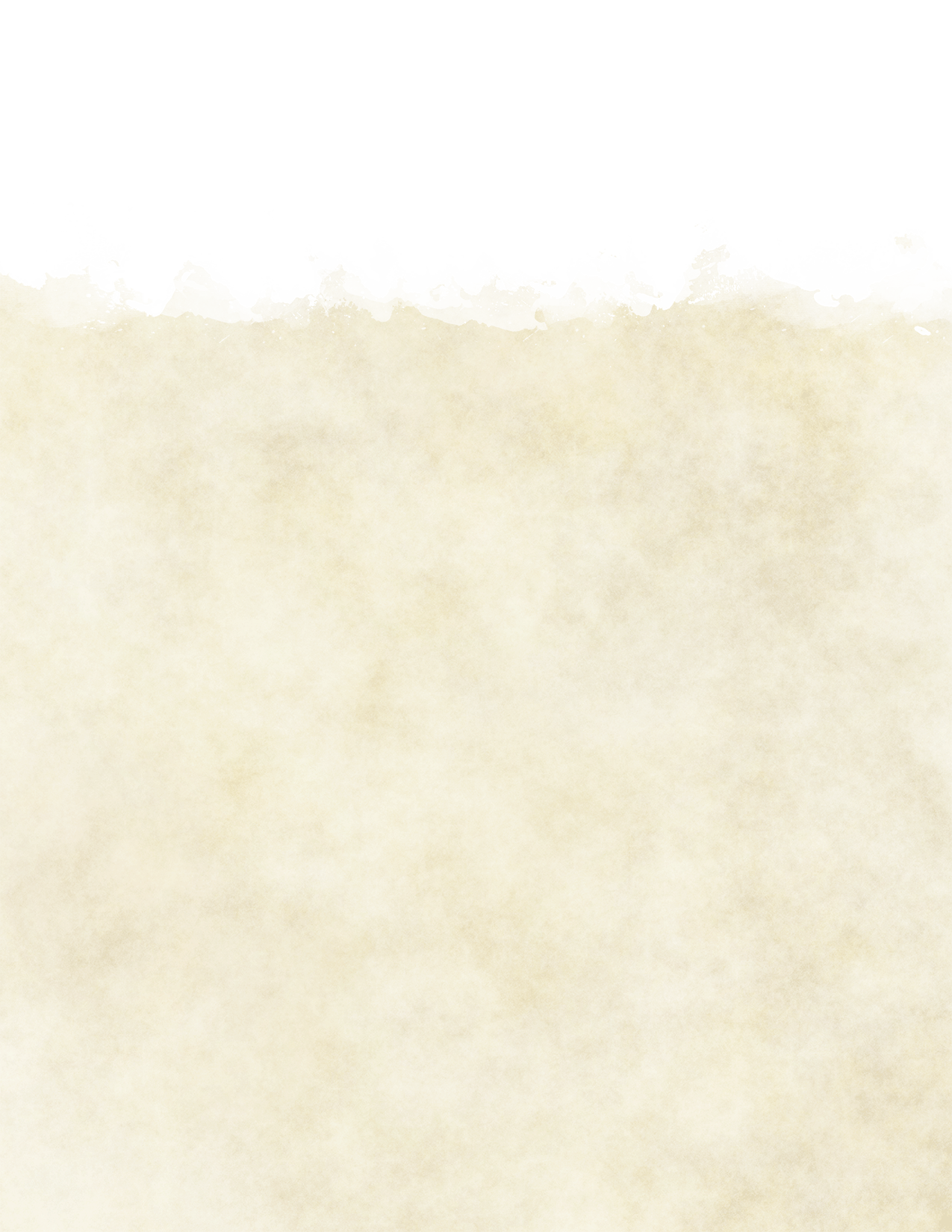
Cavalier
The archetypal cavalier excels at mounted combat. Usually born among the nobility and raised at court, a cavalier is equally at home leading a cavalry charge or exchanging repartee at a state dinner. Cavaliers also learn how to guard those in their charge from harm, often serving as the protectors of their superiors and of the weak.
Compelled to right wrongs or earn prestige, many of these fighters leave their lives of comfort to embark on glorious adventure.
Born to the Saddle
Starting at 3rd level, you have advantage on saving throws made to avoid falling off your mount. If you fall off your mount and descend no more than 10 feet, you can land on your feet if you're not incapacitated.
Finally, mounting or dismounting a creature costs you only 5 feet of movement, rather than half your speed.
Unwavering Mark
Starting at 3rd level, when you hit a creature with a melee weapon attack, you can mark the creature until the end of your next turn. This effect ends early if you are incapacitated or you die, or if someone else marks the creature.
While it is within 5 feet of you, a creature marked by you has disadvantage on any attack roll that doesn't target you.
In addition, if a creature marked by you deals damage to anyone other than you, you can use a superiority die to make a melee weapon attack against the marked creature as a bonus action on your next turn and adding the superiority die to the damage roll.
Bonus Proficiencies
At 7th level, you gain proficiency in one of the following skills of your choice: Animal Handling, History, Insight, Performance, or Persuasion. Alternatively, you learn one language of your choice.
Hold the Line
At 10th level, creatures provoke an opportunity attack from you when they move 5 feet or more while within your reach, and if you hit a creature with an opportunity attack, the target's speed is reduced to 0 until the end of the current turn.
Vigilant Defender
Starting at 18th level, in combat, you get a special reaction that you can take once on every creature's turn, except your turn. You can use this special reaction only to make an opportunity attack, and you can't use it on the same turn that you take your normal reaction.
Cavalier Maneuvers
-
Evasive Footwork: When you move on your turn, you can expend a superiority die, adding the total to your AC until you stop moving.
-
Warding Maneuver: When you or a creature you can see within 5 feet of you is hit by an attack, you can use your reaction to expend a superiority die if you're wielding a melee weapon or a shield. Roll the die, and add the number rolled to the target's AC against that attack. If the attack still hits, the target has resistance against the attack's damage.
-
Pushing Attack: When you hit a creature with a weapon attack, you can expend one superiority die to attempt to drive the target back. You add the superiority die to the attack's damage roll, and if the target is Large or smaller, it must make a Strength saving throw. On a failed save, you push the target up to 15 feet away from you.
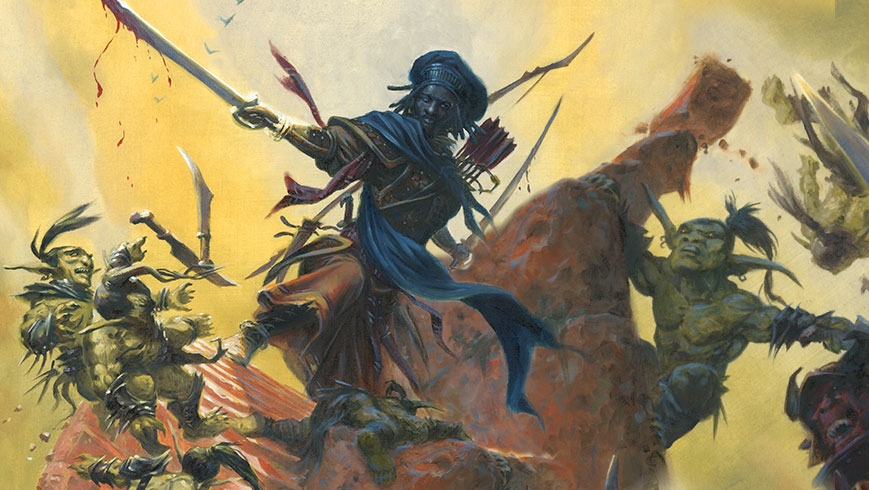

Champion
The archetypal Champion focuses on the development of raw physical power honed to deadly perfection. Those who model themselves on this archetype combine rigorous training with physical excellence to deal devastating blows.
Improved Critical
Starting at 3rd level, your weapon attacks score a critical hit on a die roll of 19 or 20.
Remarkable Athlete
Starting at 3rd level, you can add half your proficiency bonus (rounded down) to any Strength, Dexterity or Constitution check you make that doesn't already use your proficiency bonus.
In addition, when you make a running long jump, the distance you can cover increases by a number of feet equal to your Strength modifier.
Bonus Proficiency
At 7th level, you get your choice of Tool or Skill proficiency.
Resilient
At 10th level, you can add half your proficiency bonus (rounded down) to any saving throw you make that doesn't already use your proficiency bonus.
Superior Critical
Starting at 15th level, your weapon attacks score a critical hit on a roll of 18-20.
Champion Maneuvers
-
Feinting Attack: You can expend one superiority die and one bonus action on your turn to feint, choosing one creature within 5 feet of you as your target. Until the end of your next turn, you have advantage on your next attack roll against that creature. If that attack hits, add the superiority die to the attack's damage roll.
-
Goading Attack: When you hit a creature with a weapon attack, you can expend one superiority die to attempt to goad the target into attacking you. You add the superiority die to the attack's damage roll, and the target must make a Wisdom saving throw. On a failed save, the target has a disadvantage on all attack rolls against targets other than you until the end of your next turn.
-
Sweeping Attack: When you hit a creature with a melee weapon attack, you can expend one superiority die to attempt to damage another creature with the same attack. Choose another creature within 5 feet of the original target and within your reach. If the original attack roll would hit the second creature, it takes damage equal to the number you roll on your superiority die plus half the damage of the original attack. The damage is of the same type dealt by the original attack.
Echo Knight
A mysterious and fearsome frontline warrior from the Kryn Dynasty, the Echo Knight has mastered the art of using dunamis to summon the fading shades of unrealized timelines to aid them in battle. Surrounded by echoes of their own might, they charge into the fray as a cycling swarm of shadows and strikes.
Manifest Echo
When you choose this archetype at 3rd level, you can use a bonus action to magically manifest an echo of yourself in an unoccupied space you can see within 15 feet of you. This echo is a magical, translucent, gray image of you that lasts until it is destroyed, until you dismiss it as a bonus action, until you manifest another echo, or until you're incapacitated.
Your echo has AC 14 + your proficiency bonus, 1 hit point, and immunity to all conditions. If it has to make a saving throw, it uses your saving throw bonus for the roll. It is the same size as you, and it occupies its space. On your turn, you can mentally command the echo to move up to 30 feet in any direction (no action required). If your echo is ever more than 30 feet from you at the end of your turn, it is destroyed.
You can use the echo in the following ways:
-
As a bonus action, you can teleport, magically swapping places with your echo at a cost of 15 feet of your movement, regardless of the distance between the two of you.
-
When you take the Attack action on your turn, any attack you make with that action can originate from your space or the echo's space. You make this choice for each attack.
-
When a creature that you can see within 5 feet of your echo moves at least 5 feet away from it, you can use your reaction to make an opportunity attack against that creature as if you were in the echo's space.
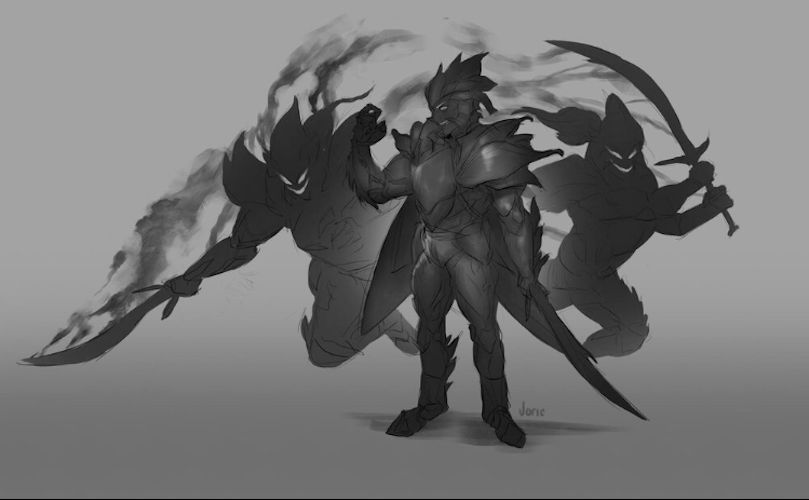

Echo Avatar
Starting at 7th level, you can temporarily transfer your consciousness to your echo. As an action, you can see through your echo's eyes and hear through its ears. During this time, you are deafened and blinded. You can sustain this effect for up to 10 minutes, and you can end it at any time (requires no action). While your echo is being used in this way, it can be up to 1,000 feet away from you without being destroyed.
Shadow Martyr
Starting at 10th level, you can make your echo throw itself in front of an attack directed at another creature that you can see. Before the attack roll is made, you can use your reaction to teleport the echo to an unoccupied space within 5 feet of the targeted creature. The attack roll that triggered the reaction is instead made against your echo.
Once you use this feature, you can't use it again until you finish a short or long rest.
Legion of One
Beginning at 18th level, you can use a bonus action to create two echoes with your Manifest Echo feature, and these echoes can coexist. If you try to create a third echo, the previous two echoes are destroyed. Anything you can do from one echo's position can be done from the other's instead.
Echo Knight Maneuvers
-
Unleash Incarnation: Whenever you take the Attack action, you can expend one superiority die to make one melee attack from the echo's position, adding the superiority die to the attacks damage.
-
Shadow Veil: When you hit a creature with an attack, you can expend one superiority die to force that creature to make a Constitution saving throw. On a failure, the creature is blinded until the start of its next turn.
-
Distracting Strike: When you hit a creature with a weapon attack, you can expend one superiority die to distract the creature, giving your allies an opening. You add the superiority die to the attack's damage roll. The next attack roll against the target by an attacker other than you has advantage if the attack is made before the start of your next turn.
Eldritch Knight
The archetypal Eldritch Knight combines the martial mastery common to all fighters with a careful study of magic. Eldritch Knights use magical techniques similar to those practiced by wizards.
They focus their study on two of the eight schools of magic: abjuration and evocation. Abjuration spells grant an Eldritch Knight additional protection in battle, and evocation spells deal damage to many foes at once, extending the fighter's reach in combat.
These knights learn a comparatively small number of spells, committing them to memory instead of keeping them in a spellbook.
Spellcasting
| Fighter Level | Cantrips Known | Spells Known | 1st | 2nd | 3rd | 4th |
|---|---|---|---|---|---|---|
| 3rd | 2 | 3 | 2 | — | — | — |
| 4th | 2 | 4 | 3 | — | — | — |
| 7th | 2 | 5 | 4 | 3 | — | — |
| 8th | 2 | 6 | 4 | 3 | — | — |
| 10th | 3 | 7 | 4 | 3 | — | — |
| 11th | 3 | 8 | 4 | 3 | — | — |
| 13th | 3 | 9 | 4 | 3 | 2 | — |
| 14th | 3 | 10 | 4 | 3 | 2 | — |
| 16th | 3 | 11 | 4 | 3 | 3 | — |
| 19th | 3 | 12 | 4 | 3 | 3 | 1 |
| 20th | 3 | 13 | 4 | 3 | 3 | 1 |
Cantrips
You start with 2 cantrips from the wizard spell list. At level 10 you gain a 3rd cantrip known.
Spell Slots
The Eldritch Knight Spellcasting table shows how many spell slots you have to cast your wizard spells of 1st level and higher. To cast one of these spells, you must expend a slot of the spell's level or higher. You regain all expended spell slots when you finish a long rest.
Spells Known
You know three 1st level wizard spells of your choice, two must come from the evocation and abjuration spell schools. The third spell can be from any Wizard school of magic.
The Spells Known column of the Eldritch Knight Spellcasting table shows when you learn more wizard spells of 1st level or higher. Each of these spells must be an abjuration or evocation spell of your choice, and must be of a level for which you have spell slots. The spells you learn at 8th, 14th, and 20th level can come from any school of magic.
Whenever you gain a level in this class, you can replace one of the wizard spells you know with another spell of your choice from the wizard spell list. The new spell must be of a level for which you have spell slots, and it must be an abjuration or evocation spell, unless you're replacing the spell you gained at 3rd, 8th, 14th, or 20th level.
Spellcasting Ability
Intelligence is your spellcasting ability for your wizard spells. You use your Intelligence whenever a spell refers to your spellcasting ability.
Spell save DC = 8 + your proficiency bonus + your Intelligence modifier
Spell attack modifier = proficiency bonus + Intelligence modifier
Weapon Bond
Once you reach 3rd level, over the course of 1 hour short rest you can bond a weapon to you. Once bonded, you cannot be disarmed unless you are incapacitated and if the weapon is on the same plane of existence, you can summon it to your hand as a bonus action. You can bond up to two weapons at once.
Bonus Proficiencies
At 7th level, you gain proficiency in one of the following skills of your choice: Arcana, History, Religion, Investigation, or Survival.
Eldritch Strike
At level 10, any creature you hit with a weapon attack has disadvantage on its next save it makes against a spell you cast before the end of your next turn.
Arcane Charge
At level 18, you can teleport up to 30 feet to a space you can see when using your Action Surge. The teleport can take place before or after the Action Surge.
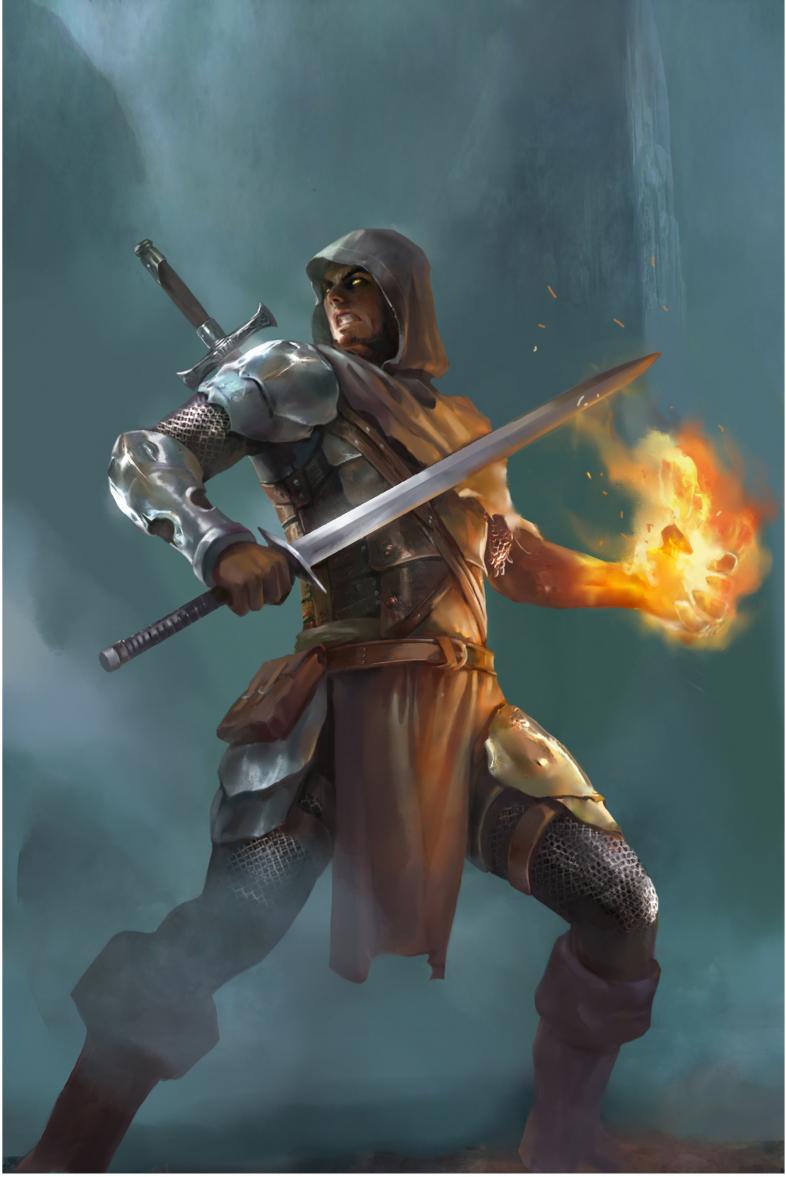



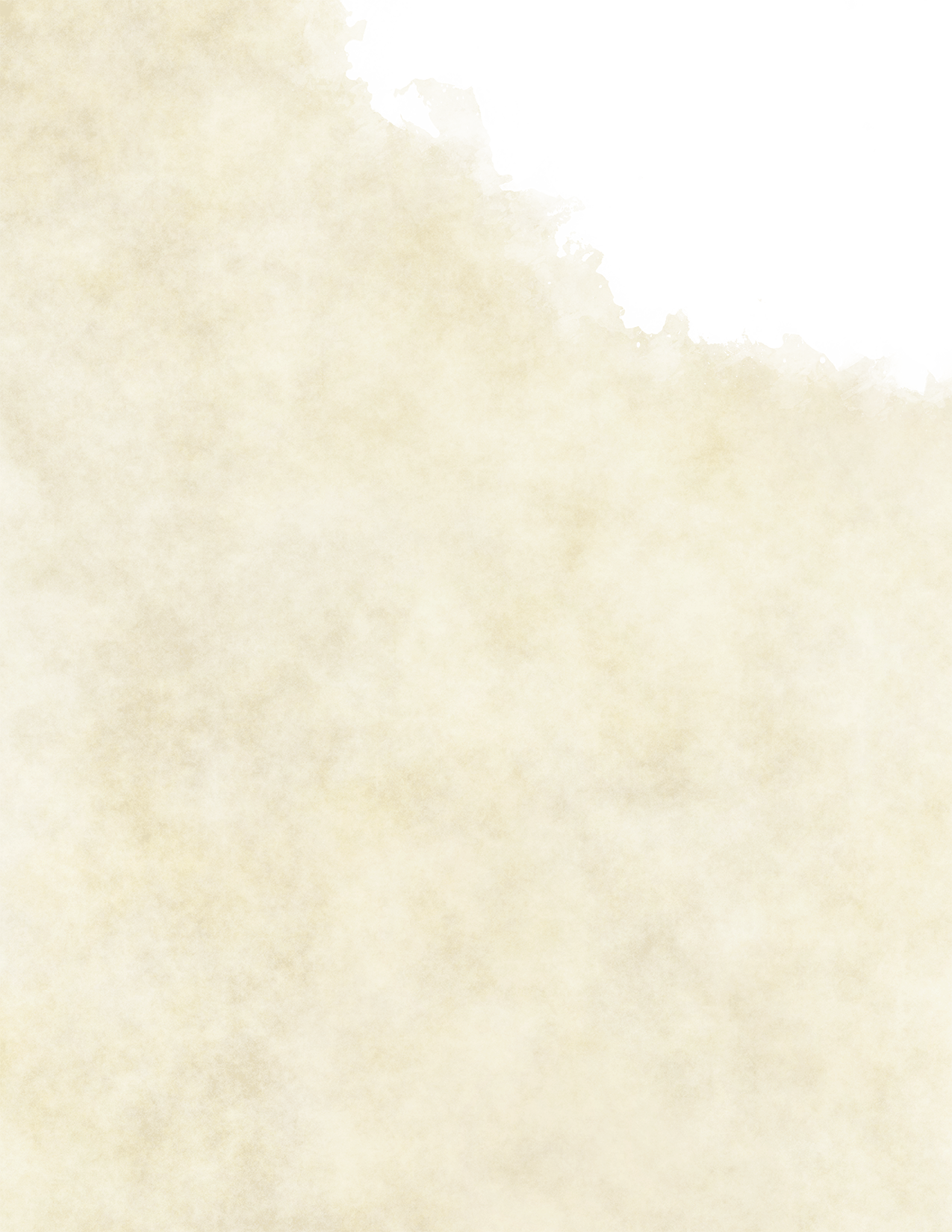

Eldritch Knight Maneuvers
-
War magic: When you use your action to cast a spell, you can use a superiority die to make a single weapon attack as a bonus action. If the attack hits, add the superiority die to the attacks damage.
-
Eldritch Focus: When you are forced to make a concentration check, you may spend a superiority die and add it to your concentration check.
-
Arcane Resolve: When you make a saving throw against a spell, you can use your reaction to expend a superiority die and add it to the result.
Samurai
The Samurai is a fighter who draws on an implacable fighting spirit to overcome enemies. A samurai’s resolve is nearly unbreakable, and the enemies in a samurai’s path have two choices: yield or die fighting.
Fighting Spirit
Starting at 3rd level, whenever you use your action surge feature, you can give yourself advantage on weapon attack rolls until the end of the current turn. When you do so, you also gain 10 temporary hit points. The number of temporary hit points increases when you reach certain levels in this class, increasing to 15 at 10th level and 30 at 18th level.
Bonus Proficiency
At 7th level, you gain proficiency in one of the following skills of your choice: History, Insight, Performance, or Persuasion. Alternatively, you learn one language of your choice.
Elegant Courtier
Starting at 10th level, whenever you make a Charisma (Persuasion) check, you gain a bonus to the check equal to your Wisdom modifier. You also gain proficiency in Wisdom saving throws. If you already have this proficiency, you instead gain proficiency in Intelligence or Charisma saving throws (your choice).
Strength Before Death
Starting at 18th level, if you take damage that reduces you to 0 hit points and doesn't kill you outright, you can use your reaction to delay falling unconscious and immediately take an extra turn. While you have 0 hit points during that extra turn, taking damage causes death saving throw failures as normal, and three death saving throw failures can still kill you. When the extra turn ends, you fall unconscious if you still have 0 hit points. Once you use this feature, you can't use it again until you finish a long rest.
Samurai Maneuvers
-
Parry: When another creature damages you with a melee attack, you can use your reaction and expend one superiority die to reduce the damage by the number you roll on your superiority die + your Dexterity modifier.
-
Riposte: When a creature misses you with a melee attack, you can use your reaction and expend one superiority die to make a melee attack against the creature. If you hit, you add the superiority die to the attack's damage roll.
- Lunging Attack: When you make a melee weapon attack on your turn, you can expend one superiority die to increase your reach for that attack by 5 feet. If you hit, you add the superiority die to the attack's damage roll.
Multiclassing
Ability Score Minimum. Strength 13 or Dexterity 13
Proficiencies Gained. Light armor, medium armor, shields, simple weapons, martial weapons
Appendix
So you're probably wondering whats the reason to revamp the fighter class in the first place. After all, fighters are by no means a bottom tier class and can reliably pump out large amounts of damage so why bother in the first place? The reason is simple: Fighters fail at what they set out to do. They have a large number of dead levels where nothing interesting happens and they aren't even really the best at fighting (I'd argue that goes to either Barbarians or Paladins). To illustrate this and highlight the need for change, here are the original design goals for the 5e Fighter.
1 The Fighter Is the Best at . . . Fighting!
This might sound like an obvious point, but the fighter should be the best character in a fight. Other classes might have nifty tricks, powerful spells, and other abilities, but when it’s time to put down a monster without dying in the process, the fighter should be our best class. A magic sword might make you better in a fight, but a fighter of the same level is still strictly better. Perhaps a spell such as haste lets you attack more often, but the fighter is still either making more attacks or his or her attacks are more accurate or powerful.
2 The Fighter Draws on Training and Experience, not Magic
Fighters master mundane tactics and weapon skills. They don’t need spells or some sort of external source of magical power to succeed. Fighters do stuff that is within the limits of mundane mortals. They don’t reverse gravity or shoot beams of energy.
3 The Fighter Exists in a World of Myth, Fantasy, and Legend
Keeping in mind the point above, we also have to remember that while the fighter draws on mundane talent, we’re talking about mundane within the context of a mythical, fantasy setting. Beowulf slew Grendel by tearing his arm off. He later killed a dragon almost singlehandedly. Roland slew or gravely injured four hundred Saracens in a single battle. In the world of D&D, a skilled fighter is a one-person army. You can expect fighters to do fairly mundane things with weapons, but with such overwhelming skill that none can hope to stand against them.
4 The Fighter Is Versatile
The fighter is skilled with all weapons. The best archer, jouster, and swordmaster in the realm are all fighters. A monk can match a fighter’s skill when it comes to unarmed combat, and rangers and paladins are near a fighter’s skill level, but the fighter is typically in a class by itself regardless of weapon.
5 The Fighter Is the Toughest Character
The fighter gets the most hit points and is the most resilient character. A fighter’s skill extends to defense, allowing the class to wear the heaviest armor and use the best shields. The fighter’s many hit points and high AC renders many monsters’ attacks powerless.
6 A High-Level Fighter and a High-Level Wizard Are Equal
Too often in D&D, the high-level fighter is the flunky to a high-level wizard. It’s all too easy for combinations of spells to make the wizard a far more potent enemy or character, especially if a wizard can unleash his or her spells in rapid succession. A wizard might annihilate a small army of orcs with a volley of fireballs and cones of cold. The fighter does the same sword blow by sword blow, taking down waves of orcs each round. Balancing the classes at high levels is perhaps the highest priority for the fighter, and attaining balance is something that we must do to make D&D fit in with fantasy, myth, and legend. Even if a wizard unleashes every spell at his or her disposal at a fighter, the fighter absorbs the punishment, throws off the effects, and keeps on fighting.
Now, those of you who were around for the playtest (or just read up on it later) will remember that fighters were very different. Particularly, the fighter had access to special maneuvers to spice up combat that later were stripped from the base class and tacked onto the battlemaster. This to put it bluntly, was a mistake. Without options to vary combat turn to turn, fighters generally turn into "I hit him with a big stick" over and over. Thus, the revamp! The goal of which is to add back in the options and complexity that caster classes take for granted. This is by no means a perfect remake, and is more to be treated as Unearthed Arcana until further playtesting. Odds are, it's overtuned. But it's a hell of a lot easier to find and fix abilities that are too strong than look at a weak class and wonder why it doesn't work.
Readdressing the design goals
The original design goals of the fighter are admirable and deserve to be properly realised. Here I'll explain what my problems were with the base fighter and what I've done to fix them.
1 The Fighter Is the Best at . . . Fighting!
The base fighter is by no means the best at fighting, I'd probably rank them behind both paladins and barbarians in terms of fighting power. This is due to the only unique ability that fighters get to help them be better fighters is action surge, which is once per rest. Later levels get extra attacks but at the same time fighters get that third swing barbarians are recklessly attacking every turn with bonus damage and paladins get free damage on every hit. The fourth attack comes at level 20, which is so rarely played its pretty much reserved for one-shots and I don't count it as a major plus.
What can we do to fix this? By adding the maneuvers back in of course! With the addition of maneuvers to not just deal damage, but augment and enhance a fighters abilities, they become the best at inflicting conditions and effects onto enemies and forcing them to fight on their terms. It's a lot harder for the enemies to do the classic "ignore the front line and go for the squishy casters at the back" when the front liners dictate the flow of the battlefield and demand your attention. As a consequence of this, the battlemaster had to be axed and cannibalised into the base chassis.
2 The Fighter Draws on Training and Experience, not Magic
This holds true on both fighters, everything they can achieve they do without the help of magic (barring subclasses).
3 The Fighter Exists in a World of Myth, Fantasy, and Legend
This is largely irrelevant to us but does give us the excuse to have more "immersion breaking" features such as attacking 8 times in 6 seconds as well as running 60 feet or grappling an ogre into submission.
4 The Fighter Is Versatile
This is one of the biggest failures of the original fighter. They straight up aren't versatile at all. Versatility comes from abilities and options, not choosing weapons where you're really just choosing a damage type that won't matter. Vanilla fighters all specialise in some way. Whether its ranged or melee, strength or dexterity, everyone chooses one style to go with because thats what the game pushes as the best strategy. Given the fact that you only get one fighting style (two if you pick the dullest archetype) and how long a process it is to increase ability scores, you are incentivised to pick a style that makes your character better at what they do and never change.
This is the main reason that the revamp fighter gets three. You can now take fighting styles to patch up weaknesses or offer new avenues in combat. For example, if you choose the Great Weapon Fighting fighting style at first level you can be fairly sure you'll be set for the rest of the game so you can now have options. You might take the Archery style to bump your aim with bows to take out flying enemies, or the Grappler style that lets you lock down enemies easier. This adds some much needed versatility.
5 The Fighter Is the Toughest Character
In the vanilla game, this is just straight up not true. Barbarians have rage that lets them keep going forever, Paladins have lay on hands that keep them healthy, Moon druids can tank like no other and even rangers have access to healing magic. This makes the fighter quite far down the list of classes in terms of toughness, with only two abilities to help them out: Second wind and Indomitable. Second wind does its job, but isn't enough on its own and Indomitable is really terrible for a long time. While the wizard is getting access to 5th level spells, you get to re-roll one failed save per long rest. Wooo. I mean even compare it to a monk who at 14th level is proficient in all saves and can reroll as long as they have Ki. At the same time the fighter can re-roll one failed save twice per long rest. It hardly seems fair.
To try fix this, Indomitable has been changed to reset on a short rest. If a wizard can end an entire encounter with a single spell, a fighter should have a good defense against it - tying into the fact that they are the best at fighting. On top of this, the level 20 feature ties back into the toughness of a fighter. While other classes must stop and rest eventually, the fighter can keep fighting and fighting and fighting until the job's done.
6 A High-Level Fighter and a High-Level Wizard Are Equal
The last point is still up for debate. While the odds are probably still stacked on the wizard side, at least the revamp fighter stands more of a chance. This mostly comes down to competency of both involved so I'll leave it at that.
So, there you have it. This document may change in time to reflect feedback but the core will (hopefully) reamin the same. The objective is not and has never been to make a class that "does a shitload of damage", but to make a martial that better fits the fantasy of a legendary fighter.
Happy Fighting
OisinR
Image Credits
All images were taken randomly from the internet, in order of appearance:
-
Heroes of Camelot Wiki https://heroes-of-camelot.fandom.com/wiki/Sir_Gawain
-
Knight Arrows Blood Warrior Battle Art https://www.amazon.co.uk/Knight-Arrows-Warrior-Battle-POSTER/dp/B00LABH9K2
-
Eowyn by Magali Villeneuve https://www.inprnt.com/gallery/magvilleneuve/eowyn/
-
Vivien of the Arkbow by Magic the Gathering https://gatherer.wizards.com/Pages/Card/Details.aspx?name=Vivien+of+the+Arkbow
-
Lieutenant of Defence by Concept-Art-House https://www.deviantart.com/concept-art-house/art/Lieutenant-of-Defence-501216771
-
Knight Exemplar by Magic the Gathering https://gatherer.wizards.com/pages/card/Details.aspx?multiverseid=243431
-
Fighter by Wizards of the Coast
-
Echo Knight - Explorers guide to Wildemount
-
Fighter Mage LI qian https://www.artstation.com/artwork/dKAle
-
Duelist - pathfinder https://pathfinderkingmaker.wiki.fextralife.com/Duelist